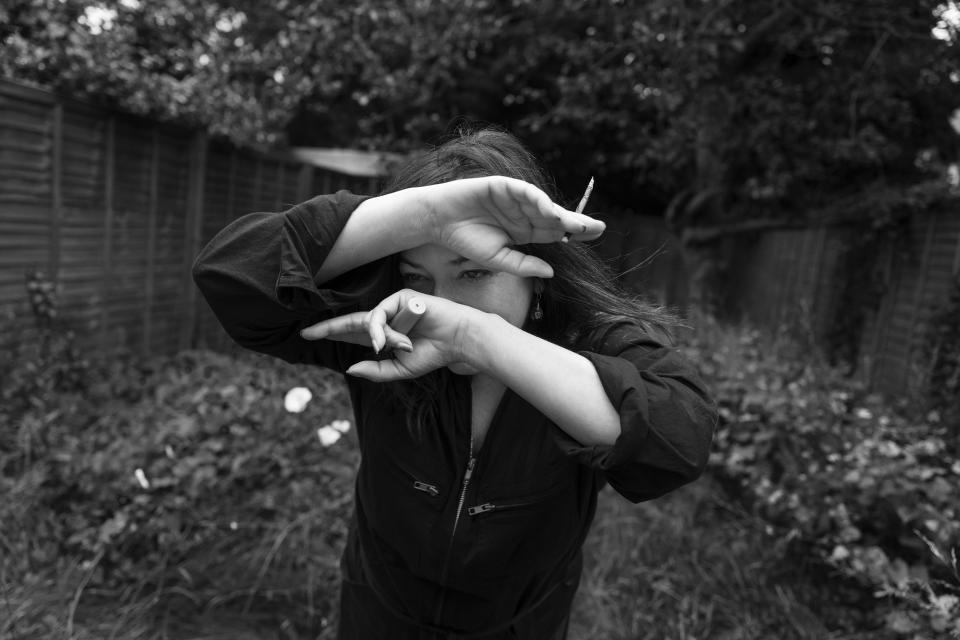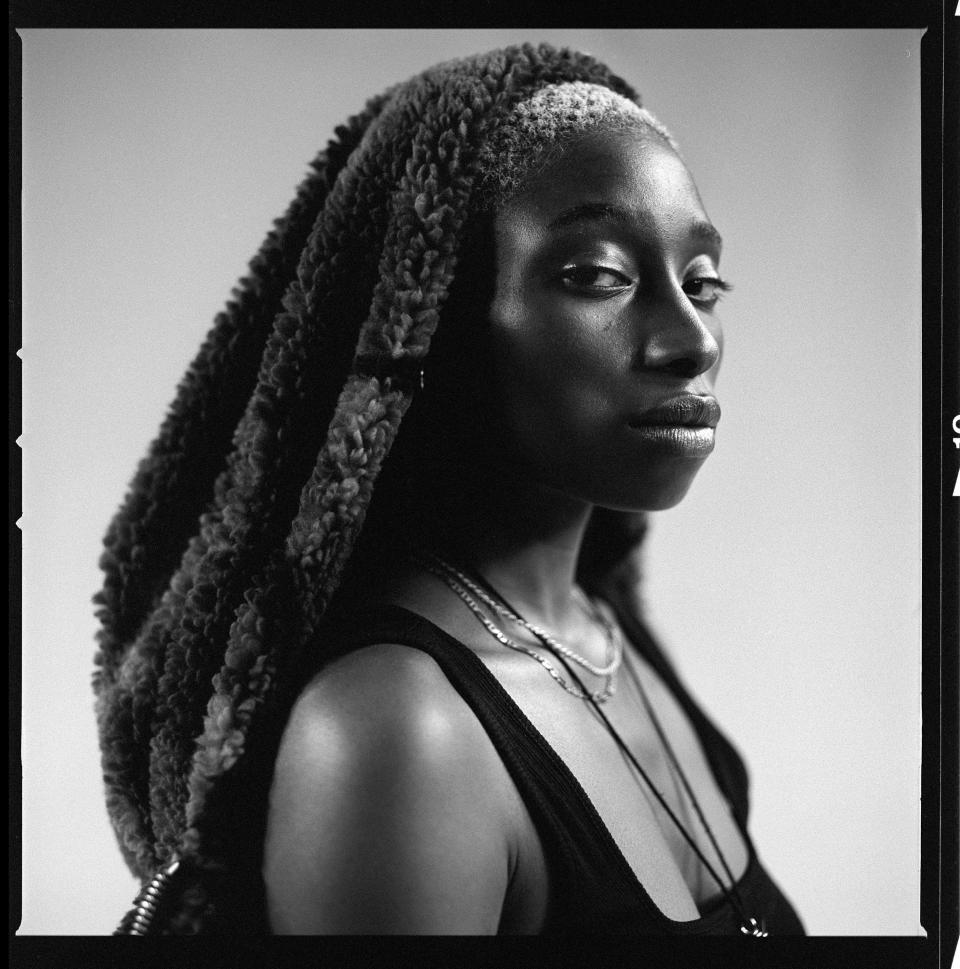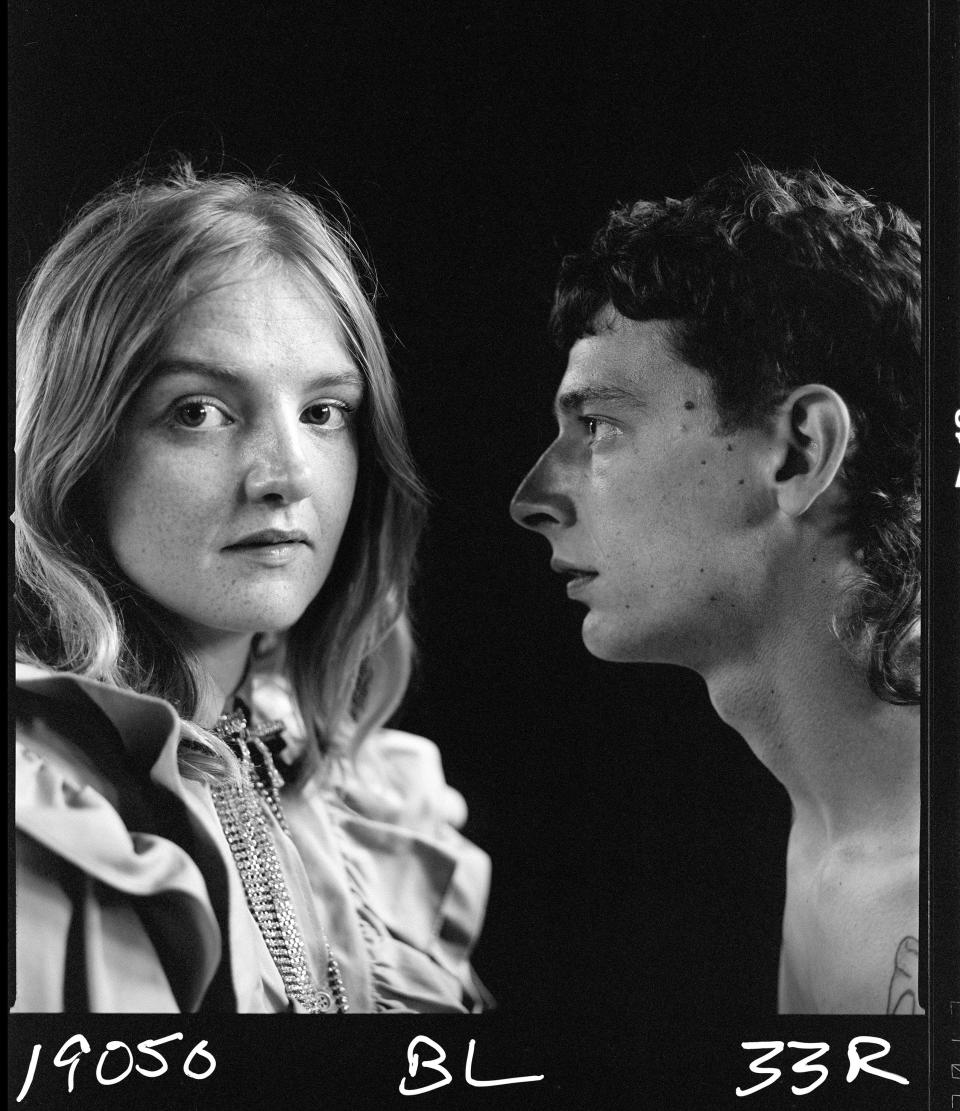Behind-the-Lens With Legendary Portrait Photographer Brigitte Lacombe
If you’ve seen a celebrity portrait taken on the set of an epic film over the past 20 years, chances are it was photographed by Brigitte Lacombe. The French photographer, who arrived in New York in the ’70s, has become the de facto portraitist of cinema’s most inspiring auteurs, from Martin Scorsese to Sofia Coppola. Lacombe’s new project sees her swapping roles; she’s stepping in front of the lens of renowned director Lynne Ramsay for Miu Miu’s Women’s Tales.
The short film, aptly titled Brigitte, depicts a portrait session between Lacombe, Ramsay, and their friends and families. Shot entirely in black and white, it’s accompanied by a voiceover interview between the photographer and director that ranges from their work to their personal lives. In advance of the film’s debut at the Venice Film Festival—where it will be celebrated as the 18th of Miu Miu’s Women’s Tales films—Lacombe chatted with Vogue about her star turn.

What made you want to step onto the other side of the camera and work with Lynne on this project about you and your photography?
Two things: First I admire Lynne as a filmmaker very much, and also I like her enormously as a woman and as a friend. I have photographed her a few times along the way, and I think she’s quite an exceptional filmmaker. Then the other is my longtime collaboration and friendship with Miu Miu, for the Women’s Tales project. I've worked on almost every single one of the films. Both things made it feel like a community.
Do you feel that Lynne captured you accurately, or represented you as you are in the film?
I don’t really know, to tell you the truth, because I’ve seen only a very rough cut. I’ve chosen not to look at the final film yet. I will see it when it’s shown in Venice. My feeling about it is that once I said, “Yes,” to Lynne, I just decided to not try to control anything or try to not even think about it too much. I was in a good situation because Lynne let me do what I do, which was shooting portraits.
In a way I was able to pretend the filming was not happening because I got quickly absorbed in doing my own work, doing the portraits. She and her team were shooting as I was working, but they were very unobtrusive. I mean I am sure it will be like me because she thinks of the project as a documentary, so I think she documented what she saw.
Did you have any reservations about having your process shown on film?
Yes, of course. You know, like most photographers, I don’t like to be in front of the camera. I’m extremely private in the way I work and like to keep a closed set. It was a big departure, for sure, but I thought I could not pass on this offer from Lynne because she’s really exceptional, and it was still within the Miu Miu family that I love. I decided to, kind of, relinquish any control and just trust.

Miu Miu was very kind in sending me a preview of the film, and one of the parts that I find the most interesting is when Lynne is in front of your camera, and you’re directing her how to pose, saying, “In your lower back, keep it very still.” Will you tell me a little bit about how you speak to the people whose portraits that you’re taking, and the energy, or the environment, that you try to cultivate on your sets?
One thing I forgot to tell you is that when Lynne asked me to do this project, I told her I would love to do it if she would let me bring her into it, so that it could become more of a dialogue and a joint project. Then I was able to bring Lynne into the film, turn the camera on her, and actually photograph her and her family. That made it easier, to deflect the attention a bit, so it was not just on me, but also about her.
Otherwise, in terms of taking portraits, that’s what I’ve been doing for a long time. That’s what I love to do, and every time I create more or less the same situation. No matter where I am in the world, if I’m in a professional studio, or if I’m in a hotel room, or in the corner of some office, or anywhere I go to do a portrait, I choose the light, which is the most important. I’ve always tried to do daylight if I can. But I control the light, I control the environment, there’s the spot that I choose, and I keep it extremely small, very protected, and very intimate. The set is closed, so there are really only the very, very essential people in the room.
After that it’s just a meeting. Being one-on-one with someone, really looking at each other, it takes a lot of trust on both sides. You have ability to let yourself be looked at in a very scrutinizing way, and you just hope that it’s with good intention. In this case, I know when I do my portraits I am coming with good intention, and I also knew that Lynne was coming with good intentions towards me. I thought, we are certainly very different but we understand each other, and we understand the process of the work that we do.
Do you have different processes for the different kinds of projects you do, ranging from the smaller Miu Miu Women’s Tales sets to larger, almost epic Martin Scorcese sets?
It’s funny because I go from very big projects to tiny projects to things that I do pro bono—I’m really very up and down with my work and with what I choose to do. But for me, to work on a Miu Miu film or to work on a Martin Scorsese film, I approach it exactly the same way. I always do a portrait of the actors and the director, no matter how little time there is, we always manage to do that, on top of being on set and shooting the set.
Being on set is the exact same thing. It’s on a different scale but it’s the same. It demands the same skill, the same vision, and the same focus. Basically, you have to be interested. I have been interested by each one of these Miu Miu projects.

How did you come into the world of Miu Miu? You’ve worked with them for a long time.
Yes, yes. I have a longstanding relationship with Miuccia Prada and a friendship with her that has gone on for many, many years. It started when I was asked by Vogue Paris, actually, to go and do a story about her, when she did her first collection.
Wow.
That was many years ago. We started a real friendship then, and that has continued to this day. It’s a very familiar world to me. When Miu Miu started this series of films, it was very exciting because they were the first ones to do this kind of film. Now, of course, it seems like everybody is doing their version of it, but Miu Miu was for sure the first one. If you look at the 18 women directors that have been involved, it’s incredibly impressive. Every one has been completely fascinating to me.
I’m used to working on feature films, where you spend months and months on a film set. To work on a Miu Miu project, like these Women’s Tales, is three days, four days at the maximum. It’s incredibly condensed and very intense. It’s a passion project, really. I got completely absorbed in it from the beginning, and became very, very interested in it, and so I intend to go on documenting for them.
Having known Mrs. Prada for so long, and worked with Miu Miu for so long, what are some of the things that draw you to her world and the things that she creates?
Everything about her to me is interesting, and she’s a true original. She’s very complex. All her interests are very diverse: of course some fashion, but architecture, art, literature. That is reflected in what she does for Prada and what she does for Miu Miu, too. It’s an interesting world to me, that I’m very much an observer of, you know?
Yes, and have you always worn Prada eyeglasses?
For a long time, yes. Actually now they have to be made again, because it’s an old model, but I’m very attached to it. [laughs] So, yes.
Has working with Miu Miu for all these years, and working on the Women’s Tales, inspired you to one day consider directing a film?
I’ve been doing a lot of film portraits. In fact every portrait I’ve done for quite a few years now, I also do a video of the portrait. I don’t think I would want to direct something because it requires to have a technical team, and it’s like a collaboration. I think I’m more interested in the one-on-one experience that I have every time I work on a portrait. I think will stay where I am.
This interview has been edited and condensed for clarity.
Originally Appeared on Vogue

